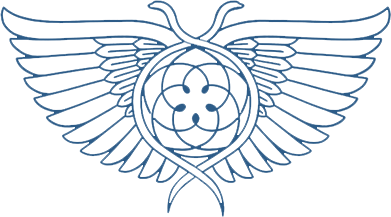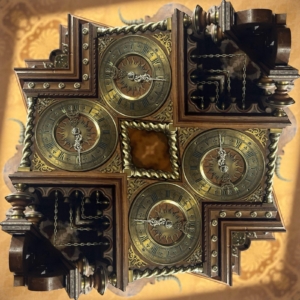Throughout time, horoscopic astrology has gone through periodic resynthesis and merging of contemporary traditions.
Contrary to popular belief, the fundamentals of the system were almost complete since the establishing of the Hellenistic tradition, in the 1st century CE, and the latter modern additions have not always been improvements. This is due to the fact that transmission did not happen linearly, in one school of thought or even one language.
The type of astrology we use in the West, based on the tropical zodiac is a merging of Mesopotamian and Egyptian traditions, which was forged in Alexandria once it became a cultural melting pot. However, these roots reach far back in time.
The Mesopotamian tradition has astrological records which go back to 2nd millenium BCE, and it is theorized that it stretches back even further. In the beginning, their sky observations were focused on correlation with mundane events, those which applied to cities or nations. By the 7th century BCE, this area had at least 10 different colleges of astrologers, which reported directly to the Assyrian Kings.
Though the 6th century BCE brought the Achamenid Empire, which served as a destabilizing force for the study of astrology, by the 5th century developments had still been made, including the standardization of the 12 signs into 30 degrees, and the production of ephemerides. By this point, observations had been made for so long, that the trajectory of the planets was known beforehand, so observations of the sky was not needed for this purpose. This is where astronomy and astrology diverged paths.
It is from this period, 410 BCE to be exact, that we have the oldest surviving birth chart from Mesopotamia, with rough psychological delineations.
Meanwhile across the water in Egypt and entirely different tradition had been forged. The Egyptians had a system based on the rising of the decans, which were each associated with fixed stars or clusters and had deity equivalents. Unlike the Mesopotamian tradition, this was focused on the diurnal rotation mainly used for calendrical and ritualistic purposes.
The practice of astrology as a form of divination was not common in the Egyptian temples until much later.It was only around 500 BCE that a mundane astrological text was translated from Mesopotamia, and around the 3rd century BCE that the zodiac was imported. It is around this century that it starts appearing on temples and tombs. The famous Zodiac of Dendera was not carved until the 1st century BCE.
After the conquest of Alexander and the founding of Alexandria in 332 BCE, this became the cultural, economic, and scientific center of the world under the Ptolemaic dynasty. Here we have the reason for Greek becoming the common scientific language across the world, facilitating exchange of information. Alexandria became a beacon, a melting pot of sciences and traditions from around the world, which brought us things like the antikythera mechanism.
It was here that the syncretism of Mesopotamian and Egyptian traditions happened. By the 1st century CE the Hellenistic system was suddenly formed, with early source texts written in a cryptic manner. This knowledge was transmitted by the Romans, who assimilated and adopted Greek cultural traits and spread the process of Hellenization.
Over the years, different mixes of political and religious circumstances have contributed to the rise and fall in the popularity of astrology.
In the 1st centuries the matter was religious, as Church fathers and theologians were writing sharp polemics against astrology, the philosophy of which clashed with the Christian belief of free will.
In 313 with the legalization of Christianity by Emperor Constantine came stricter edicts outlawing astrology. Books were burned, astrologers were banished. Some were beaten in the streets.
The split of the 4th century and the subsequent Sack of Rome brought the decline of the Empire. Though the Eastern Roman Empire continued to flourish, the Western counterpart saw a collapse in literacy. The Germanic tribes had a more rural focus, with a sky lore limited to lunar months, lucky days and constellation lore, lacking any mathematical complexities. Constantinople became the seat of knowledge for a while.
The astrological knowledge was transmitted to other places, like the Yavanajataka having reached India a few centuries before, and texts being translated by the Sassanian Empire in Persia in the 3rd century. The Persians went on to invade Egypt in 619, but were eventually replaced by the Islamic Empire which was unfortunately ruthless in destroying texts.
In 642, Alexandria went under Islamic rule, marking the end of the Roman rule and introducing a new language and culture.
It wasn’t until a century later, when the Abbasid Caliphate developed an avid interest towards scholarship, in particular astrology that further translations from Greek, Pahlavi, and Indian to Arabic were made. In the year of 762, Al-Mansur moved the capital of the caliphate from Damascus to Baghdad based on an auspicious election. The Golden Age of Islam bloomed.The 8th and 9th century gave us Masha-allah and Abu Mashar, who formed what we now know as the Medieval tradition, which was a synthesis of what existed up until this point.
After the 10th century, Arabic astrology went into decline, but the Byzantine scholars had copied the remaining works in Constantinople.
It wasn’t until the Crusades that Europe saw a reintroduction of many sciences back into its culture, having the end of the Dark Ages as a fortunate side effect. After the Reconquista, scholars translated the texts from Arabic into Latin, and by the 13th century chairs in universities around Europe had been instated for astrology, and it was again integrated into medicine. However, these were based on the Arabic and Persian methods, not the Hellenistic system which still existed in manuscripts in Constantinople.
The 15th century gave us the printing press which changed everything about how texts were being circulated, but in 1453 Constantinople falls to the Ottoman Empire and its scholars flee the dying Byzantine Empire. It is around this time that the Medieval tradition turns into the Renaissance tradition and reaches developmental peak, largely based on the works of the Arab scholars.
The 17th century brought the the Copernican Revolution, which despite taking a while to fully change the status quo, it did offer a considerable paradigm shift, which had as an effect the decline in astrological belief. By the 18th century, it was not found in universities anymore.
The current rebirth started taking place around the 19th and early 20th century, when astrology was re-popularized – along with a wide belief in many things including Spiritualism – by the works of Alan Leo. Because Leo was a member of the Theosophical Society, astrology became tied to New Age belief.
Leo was very focused on character analysis and in an attempt to simplify the system came up with some incorrect concepts which stuck, such as planet=sign=house. It was also from this time that the Sun sign craze started and was taken by newspaper columns. This modern work was taken by the likes of Dane Rudhyar and others and associated with Jung’s depth psychology. The important thing to remember is that this system revival was in partial isolation to pre-modern traditions.
In the 1950s, a great but largely unknown academic project is finished in Brussels. The Catalogus Codicum Astrologorum Graecorum, containing all the surviving astrological works in Greek is published, making it the first time in 1000 years when the original Hellenistic texts are available, but in the original language.
In the 1980s and 1990s astrologers start looking into the history and transmission, and the traditional revival starts taking place.
1992 brought us Project Hindsight, which had as scope translating the Greek texts, and in 1997 the Archive for Retrieval of Historic Astrological Texts is formed, while a worldwide interest in the traditional methods is peaked.
As of 2023, after a long and sinuous path through time traditional astrology has more practitioners than it did at any point in history.




Leave a Reply
Want to join the discussion?Feel free to contribute!